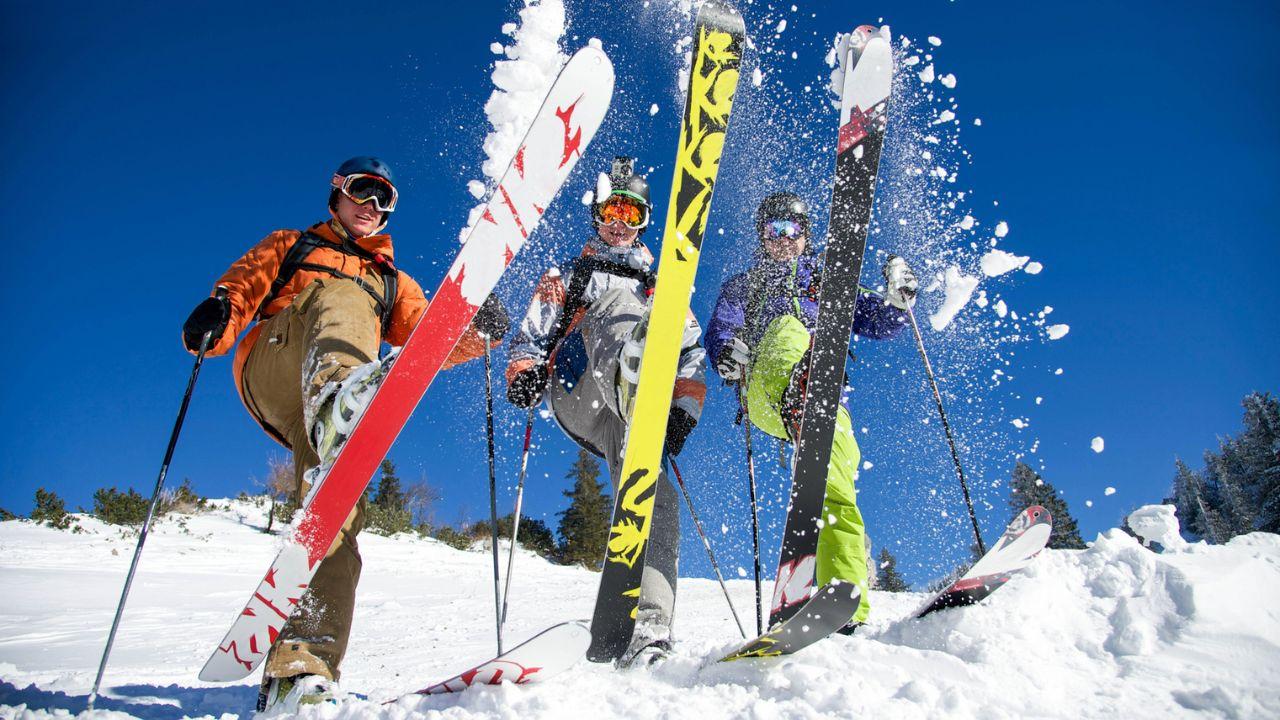How to choose the ideal equipment for freeride skiing adapted to your level?
Maximize your enjoyment on the snow by wisely investing in equipment that will propel you to new heights of performance. Ready to make the right choice? Follow our guide for an unforgettable freeride ski!

Choosing the ideal equipment for freeride skiing: complete guide
Freeride skiing, a discipline in constant evolution, attracts skiers eager for thrills and varied terrain. However, to fully live this experience, it is crucial to choose the right equipment adapted to your level. Whether you are a beginner, intermediate or advanced freeride skier, this buying guide will help you navigate through the vast selection of equipment available. The goal: guide you to the selection of the best freeride ski equipment according to your specific needs.
The 3 types of freeride skis
The choice of freeride ski equipment is crucial for a safe and enjoyable experience. There are several ranges of freeride skis, and the difference is in the width of the skis at the bindings (called the width at the skate).
The versatile (or all-mountain) skis have a skate width of between 90 and 100 mm. Thanks to their rocker tip, they allow you to launch in powder with confidence with flexible and manageable skis.
Fat skis are purely freeride skis. Designed for deep snow, they are very wide at the skate and guarantee exceptional gliding in powder.
Finally, Freerando skis are for skiers looking for a good light touring ski but also a powerful downhill ski. Aisle version of Fat skis, they allow you to go in search of the perfect spot to make your own track in the virgin slopes.
Selection of freeride ski equipment
The selection of ski equipment is a fundamental step for any freeride skier. It is essential to choose skis adapted to your height, your weight, and especially your skill level. Consider the specific models recommended in our freeride ski buying guide to find the equipment that suits your needs.
Choose the size of freeride skis
The size of freeride skis depends on several factors, including your skill level, ski style, weight, and height. Here are some general tips to help you choose:
- Size and weight: to optimize the stability in powder, we recommend choosing between +5 to +15 cm above your height;
- Ski level: you are a beginner, shorter skis will be more manageable and easier to control. Advanced skiers may prefer longer skis for better stability at higher speeds and in powder;
- Terrain type: in deep powder, longer and wider skis help to stay on the snow surface while for varied terrain, a medium-sized ski offers a good compromise between maneuverability and flotation.
To choose the size of freeride skis, here is a summary table:
Ski level
Depending on your freeride level, the size of the skis may vary. If you are a beginner, shorter skis will be more manageable and easier to control. Conversely, if you have an intermediate to advanced level, longer skis maximize stability for higher speeds in powder.
Beginner freeride skiing
Beginner freeride skiers should look for skis that offer stability and ease of handling. If this is your first outing off the marked slopes, opt for stable skis to maximize confidence in deep snow.
Intermediate freeride ski
Intermediate skiers are moving towards more efficient skis. Understand the adaptations required for terrain changes and explore options to upgrade your intermediate freeride ski equipment.
Advanced freeride skiing
Advanced freeride skiers have specific requirements. This segment will detail advanced freeride skiing and advanced material choices to meet the needs of experienced skiers.
Skiing style and type of terrain
If you like to ski between fir trees and make fast turns, opt for short freeride skis. If you want to enjoy gentle descents for more speed, turn to longer skis.
In summary, in powder fields, longer and wider skis help you stay on the surface of the swim. While on varied terrain, medium-sized skis offer a good compromise between maneuverability and flotation.
- Beginner: all-mountain skis
- Confirmed freerider: lift, grip
- Freerider expert: ski expert, with character
Freeride ski equipment for beginners
For beginners, freeride skiing for beginners must be tolerant and manageable. It is recommended to opt for shorter and wider skis, which offer better stability and facilitate turns. Remember that the best ski equipment for a beginner is one that builds confidence and safety on the slope.
Essential accessories for freeride skiing
Apart from skis, freeride ski accessories play an important role. A quality helmet, adapted glasses, and avalanche safety equipment are essential. Make sure you have everything you need for a safe mountain outing.
- Ski helmet: off-piste, wearing a ski helmet is essential to protect yourself in the event of a fall or collision;
- Backpack: technical, ergonomic and comfortable, the backpack for freeride is specially designed to easily carry safety equipment. You can also opt for an airbag backpack that triggers in case of avalanche risk;
- Safety equipment: a DVA (Avalanche Victim Detector), a probe and a shovel are the essential safety equipment to practice freeride safely. Whatever your level of skiing, these are crucial tools for the search and rescue of a person buried under an avalanche.
Tips for advanced freeride skiers
Advanced skiers can look for skis with more advanced technical specifications, such as greater rigidity or aggressive sidelines. Custom ski equipment can also be an interesting option for those looking to optimize their performance.
Choosing the right freeride ski equipment is essential to fully enjoy your mountain adventures. Whether you are a beginner or an expert, take the time to carefully select your equipment for an unforgettable skiing experience. With freeride ski hire, enjoy great brands and quality equipment for a unique off-piste experience!